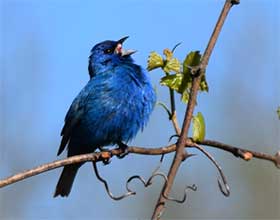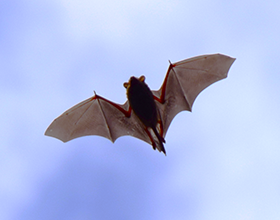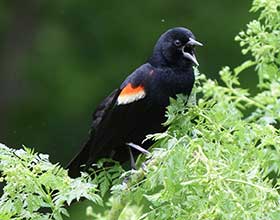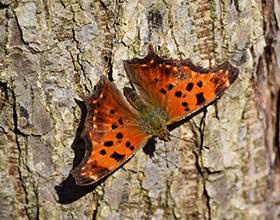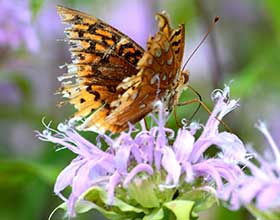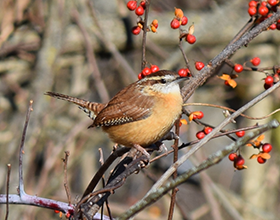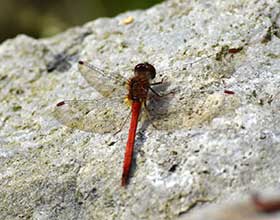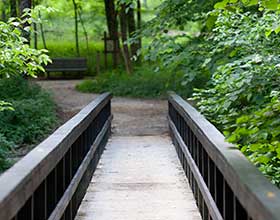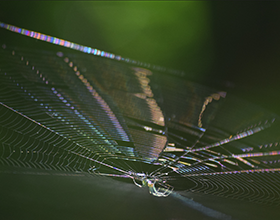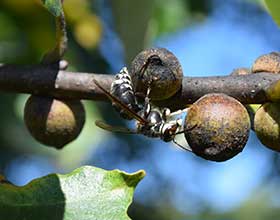Red, orange, yellow, green, blue….INDIGO. What is that color, the “I” in ROYGBIV? According to Wikipedia, ”indigo” might refer to a number of hues in the range from blue to violet. But if you look at the jazzy birds singing…
Bats in the Beech Tree
Bats in the Beech Tree With the arrival of April, lots of animal migrants are returning north to Ohio from their wintering grounds. In the tops of sycamore trees, yellow-throated warblers sing and flash their colors. Out in the wetlands,…
Blackbirds Announce Spring!
Waiting for this moment: blackbirds announce spring Spring is coming; the signs are all around! Robins have emerged from the forest and are plucking worms from lawns and fields. Back in the woods, the year’s first wildflowers, like harbinger-of-spring and…
Punctuating winter—with butterflies!
It’s midwinter and, as I write this, temperatures are predicted to remain below freezing for the January week ahead. Not a great time to go out looking for butterflies! Chances are, though, that the remaining weeks of winter will include…
Lessons on Aging
As time goes by: Lessons on aging from the birds and the bees While changing over the calendar from 2024 to 2025, it’s only natural that thoughts turn to the passage of time and the advancement of years. Aging and…
Carolina (not Kylo!) Wren: Thryothorus Awakens
From its name, one might reasonably expect that the Carolina wren — Thryothorus ludovicianus — is a bird of the south. That’s certainly true in part; Carolina wrens are common in the Carolinas and across the southeastern US. However, these…
Red Hot: Dragonflies on the Rocks
For any animal, the temperature of its body matters. Bodily functions depend on chemical processes that are temperature-sensitive and on enzymes whose functions vary with temperature. For many simple systems, chemical reactions proceed more quickly at higher temperatures. For biological…
Grant Park Bridges To Be Replaced
In 2020, the Board of Park Commissioners adopted a new master plan for Grant Park, the largest park in the District. The master plan reflects a large number of passionate voices from the community. The recommendation for safe, reliable access…
Spider Silk: A Web of Intrigue
There’s something about spiders… Despite the numerous spider decorations that will appear on and around houses this October, spiders remain high on many people’s list of “least favorite animals.” Nevertheless, spiders have some amazing traits. They can travel hundreds of…
Oaks and wasps: One picture, so many questions
Go to relax under a spreading oak tree this autumn and you may discover a somewhat unwelcome surprise. That oak may be buzzing with large, black and white hornets. What’s going on? The answer is a bit complicated. But rest…

